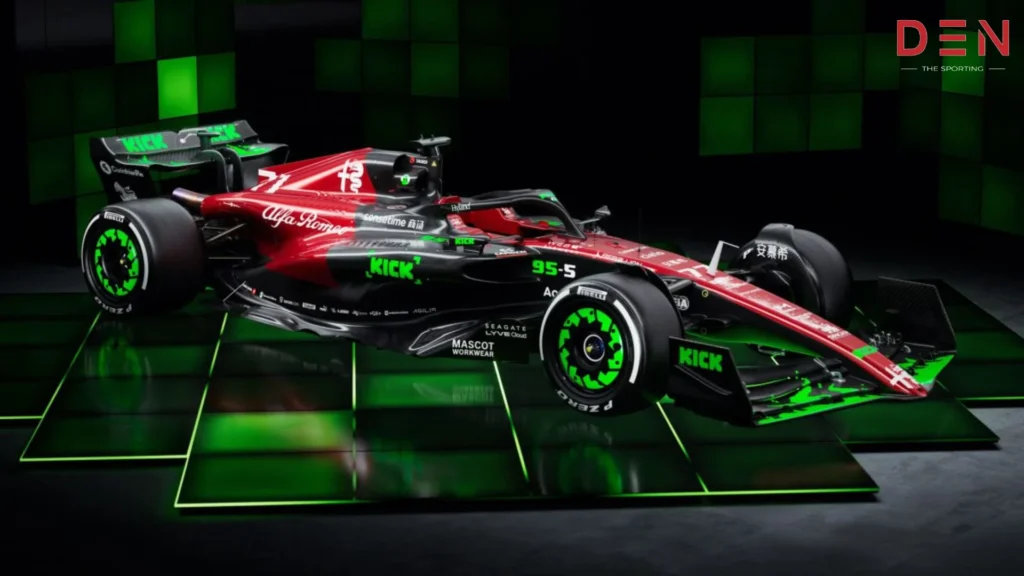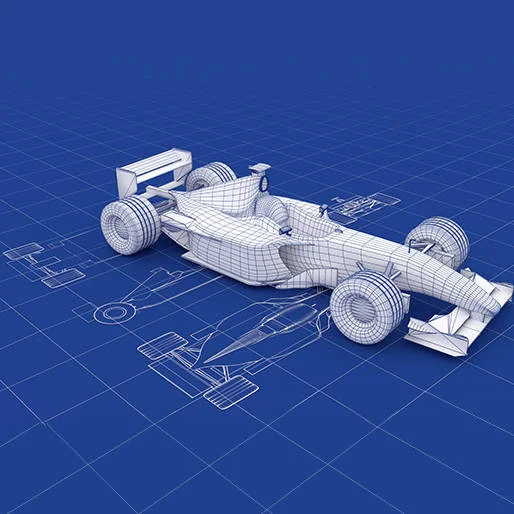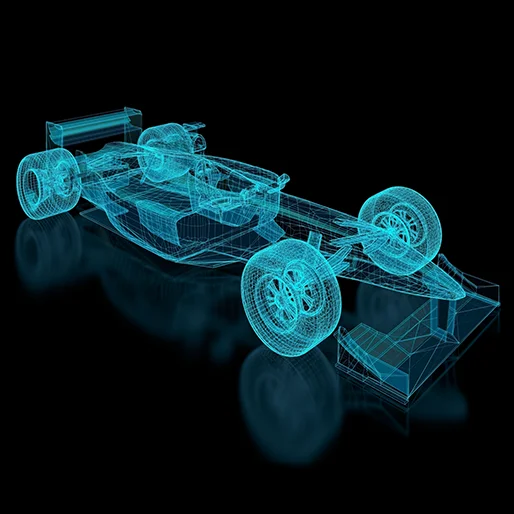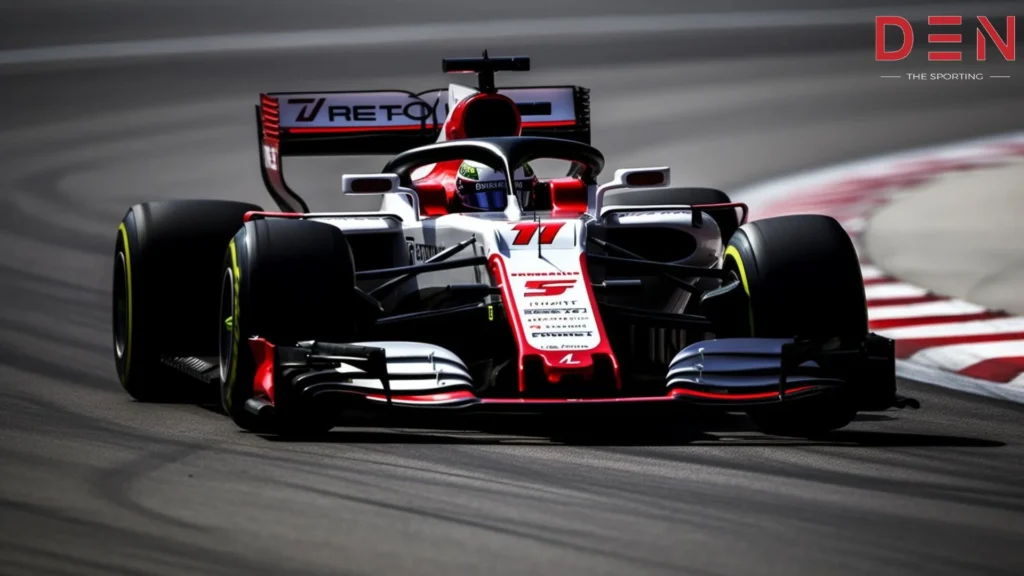
Formula One cars are marvels of engineering, pushing the boundaries of speed and performance. However, a crucial element often goes unnoticed by the casual observer – aerodynamics. The science of manipulating airflow plays a dominant role in transforming raw engine power into exceptional on-track performance. This article delves into the fascinating world of Aerodynamics of F1 Cars, explaining how these meticulously crafted machines slice through the air with unmatched efficiency.
Suggested Read: F1’s Most Challenging Circuits: Why They Are Special?
The Downward Dance: Understanding Downforce and Drag
At the heart of Aerodynamics of F1 Cars lies the concept of downforce. Downforce is the aerodynamic force that pushes the car down onto the track, generating grip that allows it to corner at high speeds without losing control. Imagine a car driving upside down – the wings pushing it down are essentially replicating that effect, albeit on a much larger scale.
Yet, there’s a trade-off to consider. The aerodynamic features responsible for generating downforce also induce drag, which acts as a resistance to the car’s forward motion. F1 engineers aim to strike the ideal equilibrium – optimizing downforce to enhance cornering performance while mitigating drag to sustain high speeds on straight sections of the track.
The Key Players: Wings, Diffusers, and Underbody Aerodynamics

Several key components work in concert to achieve this delicate balance:
- Front Wing: This intricate wing, positioned at the car’s nose, deflects airflow upwards, generating downforce on the front axle. Additionally, it channels air to other aerodynamic elements like the bargeboards and sidepods for further downforce generation.
- Rear Wing: The large wing at the car’s rear plays a critical role. Adjustable for different track layouts, the rear wing creates significant downforce, ensuring rear-wheel grip and stability at high speeds.
- Diffuser: Located under the car, the diffuser is a crucial component. It utilizes the Venturi effect, where airflow accelerates through a narrowing channel, creating low pressure that sucks the car down onto the track, generating significant downforce without adding drag.
- Underbody Aerodynamics of F1 Cars: The entire underbody of an F1 car is meticulously designed to manage airflow. Channels and sculpted surfaces help direct and control airflow, further contributing to downforce generation and overall aerodynamic efficiency.
These components work together to create a complex system that manipulates airflow for optimal performance. Modern F1 cars are testaments to cutting-edge computational fluid dynamics (CFD) simulations and wind tunnel testing, allowing engineers to refine these aerodynamic elements with incredible precision.
Mastering the Elements: Active Aero and the Impact of Weather

The pursuit of aerodynamic efficiency doesn’t stop on the drawing board. Some F1 cars utilize active aerodynamic elements, such as adjustable front and rear wings. These elements can be adjusted by the driver or automatically by the car’s computer system based on track conditions and cornering requirements, allowing for fine-tuning of downforce levels on the fly.
However, even the most sophisticated aerodynamics are not immune to external factors. Weather conditions like rain can significantly disrupt airflow, reducing downforce and requiring adjustments to car setup. F1 teams employ various strategies, including wet weather tires and modified aerodynamic configurations, to maintain optimal performance despite the elements.
The Neverending Quest for Efficiency: The Future of Aerodynamics of F1 Cars
The world of Aerodynamics of F1 Cars is constantly evolving. Regulations play a vital role, with governing bodies balancing performance with safety and cost control. Constant exploration of novel materials and manufacturing methods aims to produce aerodynamic components that are both lighter and more effective. The future of F1 aerodynamics is poised for advancements in active aerodynamic systems and deeper integration of underbody airflow management, aiming to achieve greater downforce while minimizing drag.
Suggested Read: Legendary F1 Drivers and Their Impact
FAQs
F1 cars need not only raw speed but also downforce to grip the track when cornering at high speeds. Aerodynamics helps achieve this downforce.
Downforce is an aerodynamic force that pushes the car down onto the track, generating grip, allowing it to corner faster without losing control.
Key aerodynamic elements create downforce: Front and Rear Wings: Shaped to generate lift in reverse, pushing the car down.
Underfloor: Designed to channel airflow and create a low-pressure zone, sucking the car down.
Other Elements: Diffusers, sidepods, and bargeboards work in conjunction to optimize airflow and downforce.
Explore the following resources: Formula 1 Website: F1 Race Schedule and more will be available on (https://www.formula1.com/)
Summing it Up
The Aerodynamics of F1 Cars are an intricate dance between downforce and drag, a scientific ballet that allows these machines to achieve seemingly impossible feats of speed and agility. Every detail, from the intricately crafted wings to the management of underbody airflow, is carefully engineered to optimize aerodynamics for peak performance. With technological advancements and evolving regulations, the quest for aerodynamic efficiency will continue to be a central focus in the dynamic realm of Formula One.




